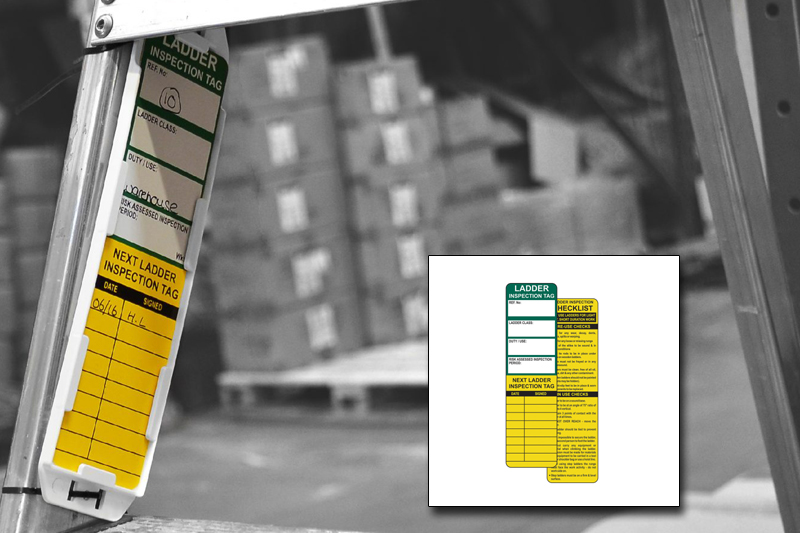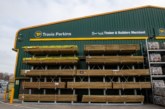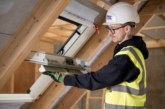
Working at height remains one of the biggest causes of fatalities and major injuries within the construction sector, yet simple steps can be taken to improve safety. Spectrum Industrial, a Trading Division of Centurion Europe, outlines the situation and explains what can be done to keep your staff and customers safe.
Everyone has access to ladders, either at home or in the workplace, yet for such common pieces of equipment, why do they pose such a risk? In fact, used correctly, ladders are not particularly dangerous but the HSE estimates they are responsible for nearly 40% of all falls from height investigations.
In 2019/20, of the 111 workers killed in the workplace, twenty-nine of them were fatally injured while falling from height. Added to which, falls from height accounted for over five thousand of all non-fatal workplace injuries, often resulting in catastrophic and life-changing damage to the victim.
In 2020 for example, a company in Scotland was prosecuted after an employee fell 2m from a ladder and suffered a serious elbow injury. The HSE investigation found the company had failed to ensure that the work at height task was carefully planned and managed, they also failed to ensure the equipment provided was inspected at regular intervals and fit for use. The fine and costs incurred totaled £125,000. This is not an isolated case. Yet many fall from height accidents can be prevented if the right safety measures are correctly applied.
Ladders and the law
The purpose of the Work at Height Regulations 2005 is to prevent death and injury from a fall from height. In the eyes of the law, height is considered anything above ground level and in fact most injuries are caused by falling less than two meters.
When it comes to ladders, it is a common misconception that ladders are banned under health and safety law. The HSE is clear that in some situation’s ladders can be a sensible and practical option for low-risk, short duration tasks provided the risks are assessed and appropriately managed. The recommendation being that short duration is considered a task lasting 30 minutes or less.
Risk assessment
So, the law says you can use a ladder when your risk assessment has shown that an alternative piece of equipment is not justified (or proportionate) to the task at hand. Duration of the task is not the only deciding factor, however, and consideration should also be given to where the ladder will be positioned and how it will be secured.
Also, do not let the assumption that everyone knows how to use a ladder correctly be your downfall. Remind employees of the dangers of overstretching or using ladders alongside heavy equipment and offer training if appropriate.
Ladder safety checks
Inspecting ladders for defects is the next step in identifying and preventing any risks that may occur. Audits and visual inspections should be regularly conducted by a competent person, following the specific guidance outlined in the manufacturer’s instruction manual. Pre-use checks can also be used alongside, or as part of, your standard inspection process. This HSE guide details a pre-use checklist, which they recommend is completed at the start of every working day or new task.
Ladder tags are great accessories to the inspection process, especially in busy workspaces with multiple pieces of equipment. They are highly visible and easily attached to the ladder to clearly indicate to prospective users whether the ladder is safe to use when it was last inspected and when the next inspection is due. Ladder tags can be extremely useful for employers in evidencing a robust ladder safety process.
Don’t be poles apart on scaffolding safety
It is safe to say that working with scaffolding is a whole different ball game from what it was just over half a century ago. In the years before the Health and Safety Act was developed, unskilled workers were throwing caution to the wind when it came to construction. There were no safety systems in place, no training, no policies, no PPE. It was flat caps instead of hard hats and nerves of steel that were responsible for so much of the built environment we still have around us today.
Despite the considerable innovations in safety, working at height remains a dangerous activity and is still the leading cause of workplace fatality. According to the HSE, in 2019/20, of the 111 workers killed in the workplace, twenty-nine of them were killed while falling from height.
And while the National Access and Scaffolding Confederation (NASC) declared a record low number of accidents related to scaffolding in 2020, the organisation cites the commitment of its members to put in place the highest safety standards as the reason for the downward trend. The onus is, therefore on all scaffolding firms to follow suit.
The law
The purpose of the Work at Height Regulations 2005 is to prevent death and injury from a fall from height. According to the HSE, “it is a requirement of the Work at Height Regulations 2005 that unless a scaffold is assembled to a generally recognised standard configuration, e.g. NASC Technical Guidance TG20 for tube and fitting scaffolds or similar guidance from manufacturers of system scaffolds, the scaffold should be designed by bespoke calculation, by a competent person, to ensure it will have adequate strength, rigidity and stability while it is erected, used and dismantled”.
Scaffold planning
From a legal point of view, it is clear that planning and design play a critical element in the scaffold safety process. The scaffolding contractor will need some basic information from the user to start with. From details on the site location through to expected duration, intended use and access requirements to name but a few. The scaffolding contractor will then be able to feedback on safety factors such as whether advanced rail guard systems are appropriate for their specific design or whether users will require safety harnesses. For further information on scaffold design, see the HSE Scaffold Checklist.
Scaffolding safety checks
The HSE recommend that scaffolding is inspected “before it is used for the first time and then every seven days, until it is removed. It should also be inspected each time it is exposed to conditions likely to cause deterioration e.g. following adverse weather conditions or following substantial alteration”. Crucially, inspections should be undertaken by a ‘competent person’. This means someone who has the knowledge, competency and understanding of the type of scaffolding they are inspecting and or/ may have undergone specific training.
The inspection should follow up with a report that notes any defects or issues that could pose a health and safety risk and record any corrective actions taken, even when the actions are made immediately, as this will help identify any recurring problem.
Scaffolding tags are valuable accessories to the scaffolding inspection toolkit. They offer that extra bit of visual assurance to the user that the scaffold has recently been inspected and is safe for them to use.
Conclusion
Although data shows that falls from height are reducing, they remain the leading cause of fatal workplace accidents and employers cannot take their eye off the ball when it comes to managing the risk. Always follow the manufacturers’ guidelines, keep your risk assessments up to date, your equipment maintained and your safety checks regular and visible.
For more information, visit www.spectrum-industrial.co.uk









